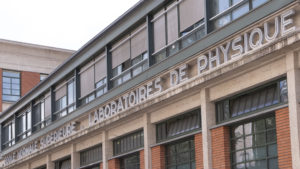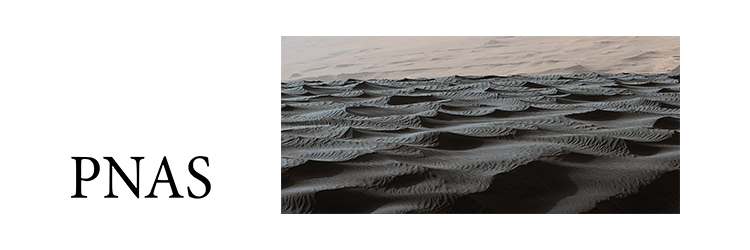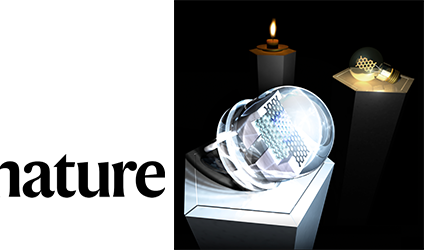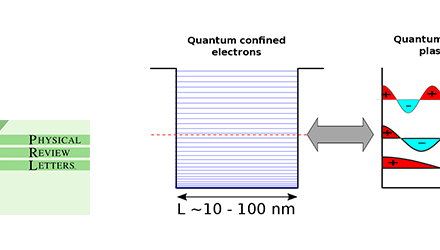The transport of grains by the wind leads to the formation of dunes and wrinkles, which can be observed on beaches or deserts, but also on the surface of different planets or celestial objects (Mars, Comet Chury). A crucial point is that it is necessary to exceed a certain wind speed threshold to set these grains in motion and maintain a flow of sediment. Researchers from ENS-PSL, ESPCI Paris-PSL, and Aarhus University in Denmark have reproduced, in a low-pressure wind tunnel (1), the conditions of sediment transport encountered on Mars. In their work published in the PNAS (2), the scientists show that at very low pressure, a new grain movement regime appears, compatible with the observations made on the Red Planet.
An original way of studying extraterrestrial geomorphological processes is to use analogue experiments, which reproduce, in part but in a controlled manner, the conditions encountered on the planet. In the case of the transport of grains by the wind (the ‘saltation’) on Mars, this involves working at very low pressures, corresponding to the very sparse atmosphere (of the order of 10 mbar) that prevails there. A team from the PMMH laboratory (ESPCI Paris-PSL / CNRS) and the Physics Laboratory of the ENS-PSL used a wind tunnel at the University of Aarhus (1) in which the pressure can be adjusted and lowered to Martian values and even below. By varying the wind speed, the physicists obtained a very precise curve of the evolution of the saltation threshold as a function of a dimensionless characteristic quantity, the Galileo number (depending on the gas density and viscosity, as well as on the properties of the grains). This curve shows surprisingly low salinity threshold values for the low values of this number, including Martian conditions. These experimental values are not reproduced by the predictions of current models and simulations, which predict higher values. The researchers were also able to observe, within the wind tunnel, the formation and displacement of decimetre-sized wrinkles, in continuity from atmospheric pressure to Martian pressure.
These results, which are consistent with observations made on the surface of Mars, in particular by the Curiosity rover (3), challenge our understanding of saltation in this important regime for extraterrestrial conditions. They highlight the need to better describe physical processes such as grain collision, grain rebound/trapping on a sediment bed, and to identify new mechanisms at work in the interaction between grains and fluids in this low pressure regime.
(1) Aarhus Mars chamber, Denmark, part of the Europlanet Research Infrastructure network.
(2) A lower-than-expected saltation threshold at Martian pressure and below, B. Andreotti, P. Claudin, J.J. Iversen, J.P. Merrison and K.R. Rasmussen. Natl. proc. Acad. Sci. USA ***, *** (2021).
(3) Photograph of a Martian dune in Gale Crater by NASA’s Curiosity rover, see photojournal.jpl.nasa.gov/catalog/PIA20755. On the surface of the dune there are ‘large’ wrinkles of metric size and small ones with a peak-to-peak distance of about 10 cm. Image Credit:NASA/JPL-Caltech/MSSS.
More :
A lower-than-expected saltation threshold at Martian pressure and below, Proc. Natl. Acad. Sci. USA February 2, (2021). https://doi.org/10.1073/pnas.2012386118
Author affiliation :
Laboratoire de Physique de L’Ecole normale supérieure (LPENS, ENS Paris/CNRS/Sorbonne Université/Université de Paris)
Corresponding author : Bruno Andreotti
Communication contact : L’équipe de communication














